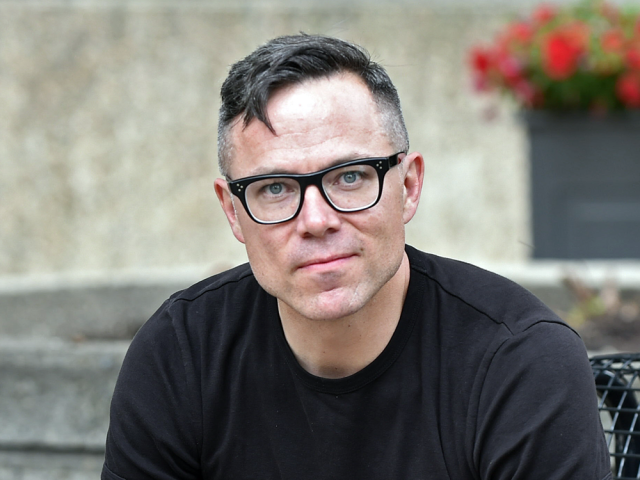Sourcea: ottawacitizen.com
Skeptics such as the University of Alberta’s Timothy Caulfield say there is no good evidence from human trials to support the idea that injecting stem cells has a global, anti-aging effect.
“To be honest, it isn’t even a scientifically plausible idea,” Caulfield, Canada Research Chair in health law and policy, said in an email from Lisbon, where, coincidentally, he was speaking on the power of celebrity narratives.
“While I’m sure Shatner means well, it is still frustrating to have celebrities endorse procedures like this. They lead to headlines that both help to publicize these clinics and legitimize the unproven therapies.”
Caulfield said it was personally upsetting to him that Shatner — Capt. James T. Kirk to adoring fans worldwide — is involved. “Let me put it this way,” he wrote. “I once had a cat named Tiberius.” (The “T” in James Kirk’s middle name stands for Tiberius.)
Shatner, a Montreal native, declined a request for an interview.
However, DiRienzo, CEO and founder of ProGenaCell, confirmed to the Post that Shatner received an infusion of stem cells about two weeks ago.
“I’m a close friend of Bill’s. I’ve been a friend of Bill’s for years,” DiRienzo said. “And he is an intellectually exceptional, physically exceptional individual, notwithstanding his 88 years of age.”
DiRienzo said Shatner had explored the possibility of stem cell transplantation for at least seven or eight years. “We started by treating one of his horses years ago” for a bad knee, he said.
Shatner’s doctor chose to use cord blood stem cell products supplied by Invitrx Therapeutics, Inc. The U.S. Food and Drug Administration has approved the cells for human use. “We knew we could lawfully give the cells here, in the U.S., which we did,” DiRienzo said. Senapathi, “a truly brilliant stem cell scientist,” administered the cells by IV infusion to Shatner at his home.
The actor received primarily mesenchymal stem cells — cells that can differentiate, or grow, into a variety of cell types, including bone, cartilage, muscle cells and fat cells. The idea is to restore cellular function to cells that have undergone “senescence” — cells that have grown old, and stopped dividing.
“It would be like bringing in a bunch of skilled labourers into a house that needs to be remodelled, and these skilled labourers just start fixing things,” DiRienzo explained.
Shatner received a double dose. “He got 60 million” cells.”
- Unlicensed clinics charging Canadians thousands for unproven stem cell therapies
- Study reveals explosion of unproven stem-cell treatment in U.S. — and many Canadians are seeking them out
- William Shatner’s on a musical mission, despite not being able to really sing
DiRienzo said the risks are “almost nonexistent,” as long as the cells are properly harvested, manufactured and processed in approved laboratories.
“In Bill’s case, there are no underlying illnesses that we treated. It was for overall restoration,” he said.
“His first text to me (after the stem cell infusion) said, ‘Geez. I rode five horses today, and I’m feeling less pain.’” (Shatner breeds and shows American Saddlebreds and Quarter horses.)
DiRienzo said his company has received “quite a few” inquiries following Shatner’s May 31 tweet. The roughly US$16,000 cost of the therapy was “gifted” to Shatner, but the actor is not being paid to promote the therapy, DiRienzo said. “Gosh, no, not at all.
“He didn’t endorse it. He just had it done. There’s no endorsement there.”
DiRienzo said there is science behind the treatment and that a “huge amount” of studies has been published on stem cell therapies since the 1930s.
One randomized, double-blind study published in 2018 by University of Miami researchers found that frail, elderly people showed improvements in physical performance and markers of inflammation after receiving mesenchymal stem cell therapy.
Stem cell biologist Paul Knoepfler, of UC Davis School of Medicine, isn’t convinced. “I don’t know that these (cord blood stem cells) would actually do anything beneficial when infused into an adult.”
It’s not clear how many of the stem cells would survive after injection into the body — they come from a different person, so there’s a good chance many would be destroyed by the immune system — or how long they would hang around in an otherwise healthy, aging adult.
The cells do secrete growth factors and other molecules “that, hypothetically, could do some stuff,” Knoepfler said. “They might do some good stuff, and they might do some stuff that’s not so good.”
He appreciates that Shatner began his tweet with the #ad hashtag, “Because a lot of celebrities don’t.
“I’m sure William Shatner wants to keep on going and be healthy. I can’t really fault him for personal choice. But the tweet makes it more likely that dozens of just regular people might give it a try, too,” and that could come with financial risk.
“There are a lot of people I’ve seen who have taken out mortgages, or had these huge fundraisers with family and church, just to scrape together $10,000 or $20,000 for these kinds of unproven stem cells,” Knoepfler said.
